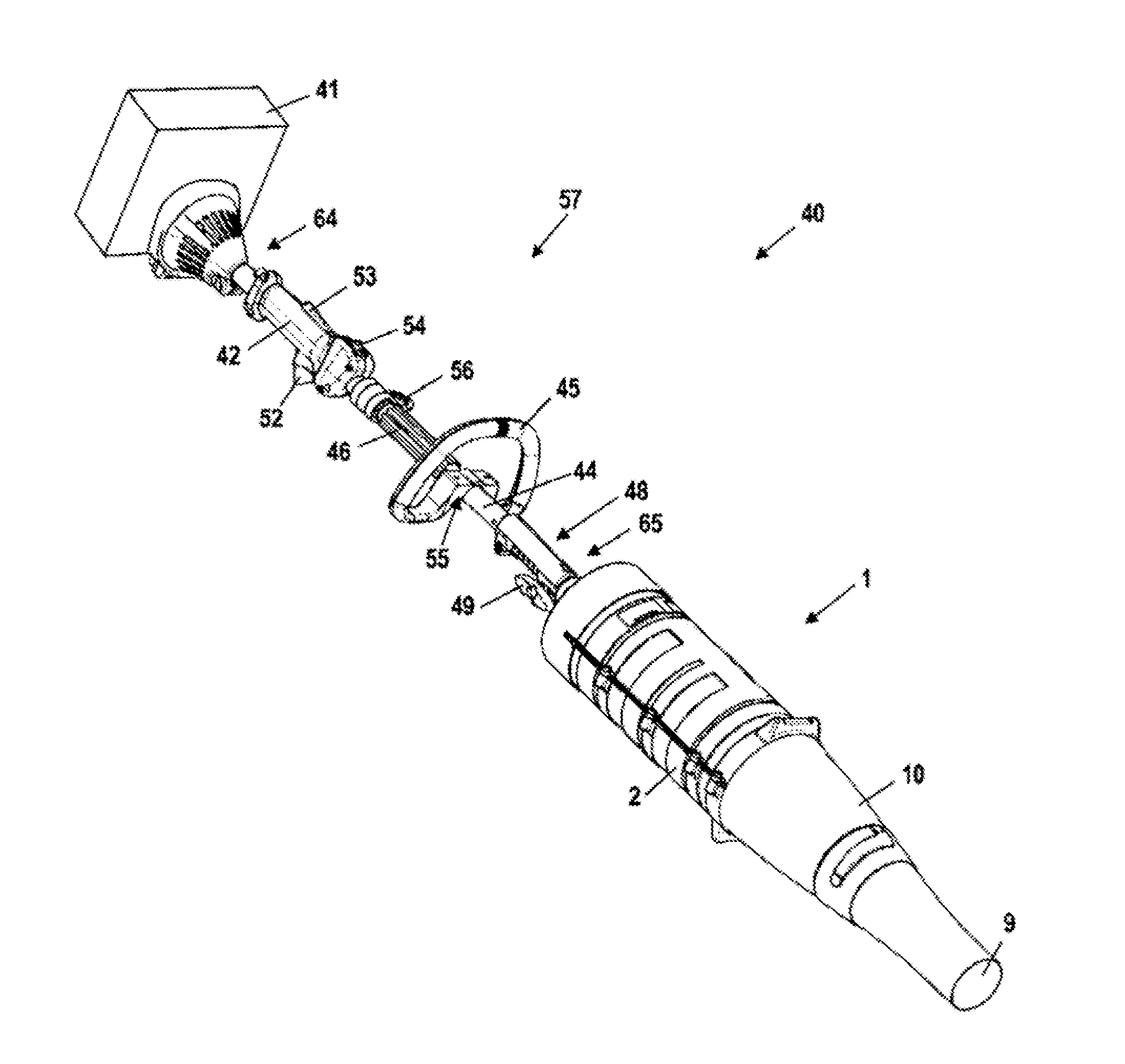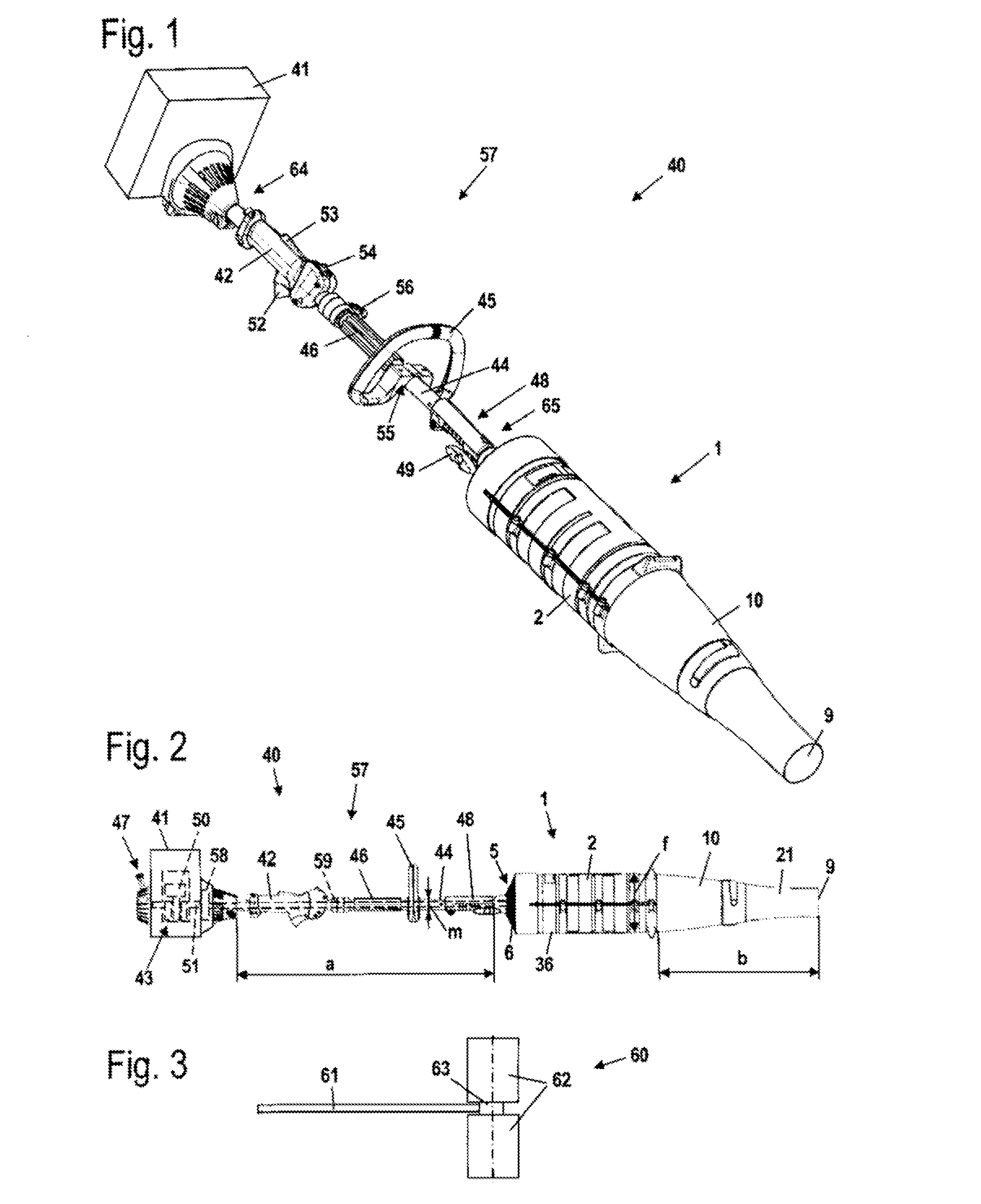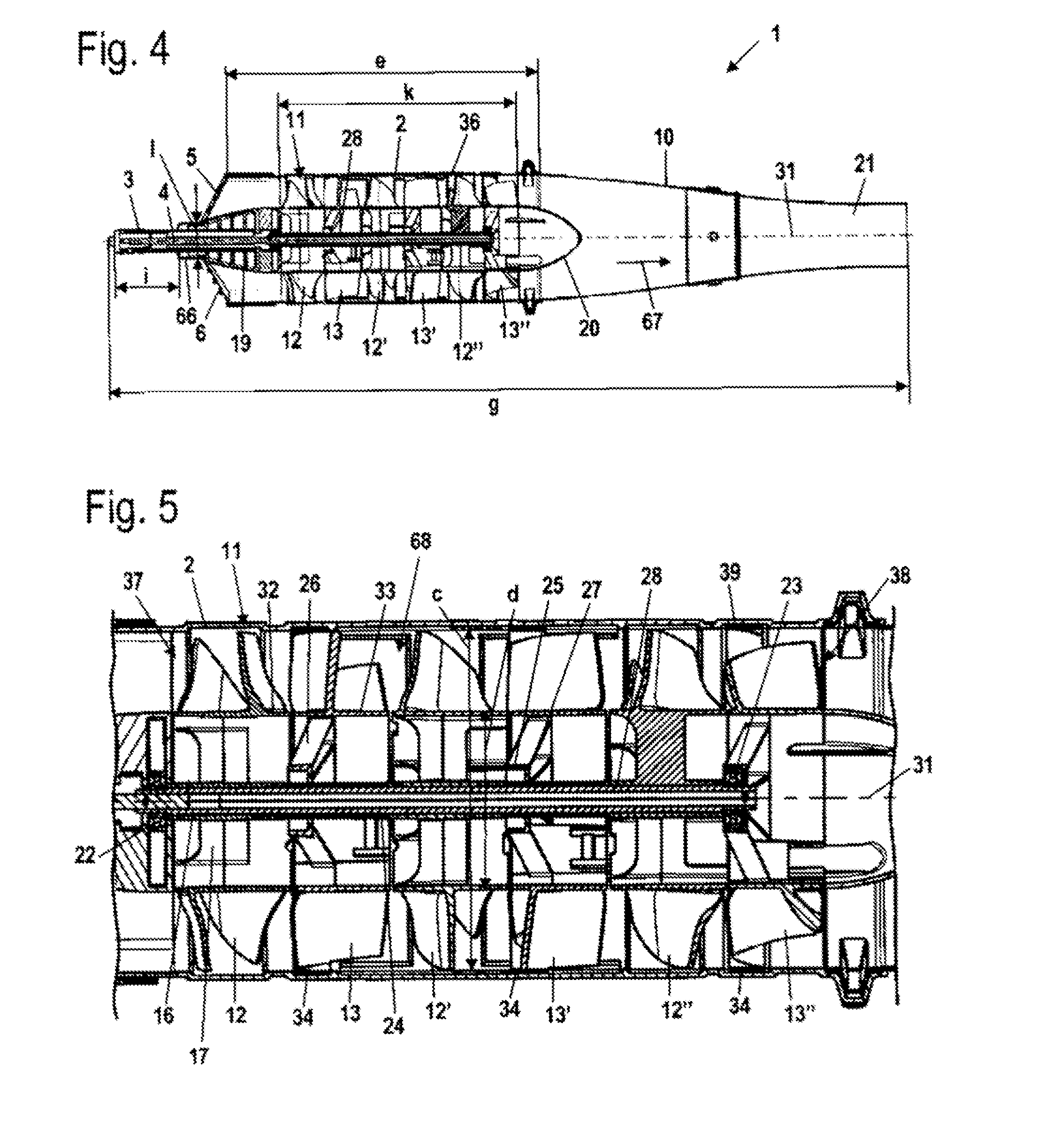Portable Blower
a blower and portability technology, applied in the direction of positive displacement liquid engines, piston pumps, liquid fuel engines, etc., can solve the problems of reducing the resistance to flow downstream of the axial fan, increasing the blowing capacity, etc., to achieve the effect of enhancing the resistance to flow and avoiding rotational symmetry
- Summary
- Abstract
- Description
- Claims
- Application Information
AI Technical Summary
Benefits of technology
Problems solved by technology
Method used
Image
Examples
Embodiment Construction
[0022]Referring now to the drawings in detail, the portable blower 40 shown in FIG. 1 has a blower unit 1 and a motor unit 57. The blower unit 1 is secured to a coupling unit 48 of the motor unit 57. The blower unit 1 is detachably held on the motor unit 57. An actuating screw 49 is provided on the coupling unit 48 for detachment of the blower unit 1.
[0023]The motor unit 57 includes an engine housing 41 and a guide tube 44 that is secured to the engine housing 41. In the illustrated embodiment, the engine housing 41 is schematically illustrated as a closed engine housing. However, the engine housing 41 can also be largely open, and can, for example, be formed by only a single cover element, so that a drive motor disposed in the engine housing 41 is substantially freely accessible from the outside. A first end 64 of the guide tube 44 is secured to the engine housing 41, and the coupling unit 48, via which the guide tube 44 is connected to the blower unit 1, is disposed at the opposit...
PUM
 Login to View More
Login to View More Abstract
Description
Claims
Application Information
 Login to View More
Login to View More - R&D
- Intellectual Property
- Life Sciences
- Materials
- Tech Scout
- Unparalleled Data Quality
- Higher Quality Content
- 60% Fewer Hallucinations
Browse by: Latest US Patents, China's latest patents, Technical Efficacy Thesaurus, Application Domain, Technology Topic, Popular Technical Reports.
© 2025 PatSnap. All rights reserved.Legal|Privacy policy|Modern Slavery Act Transparency Statement|Sitemap|About US| Contact US: help@patsnap.com



